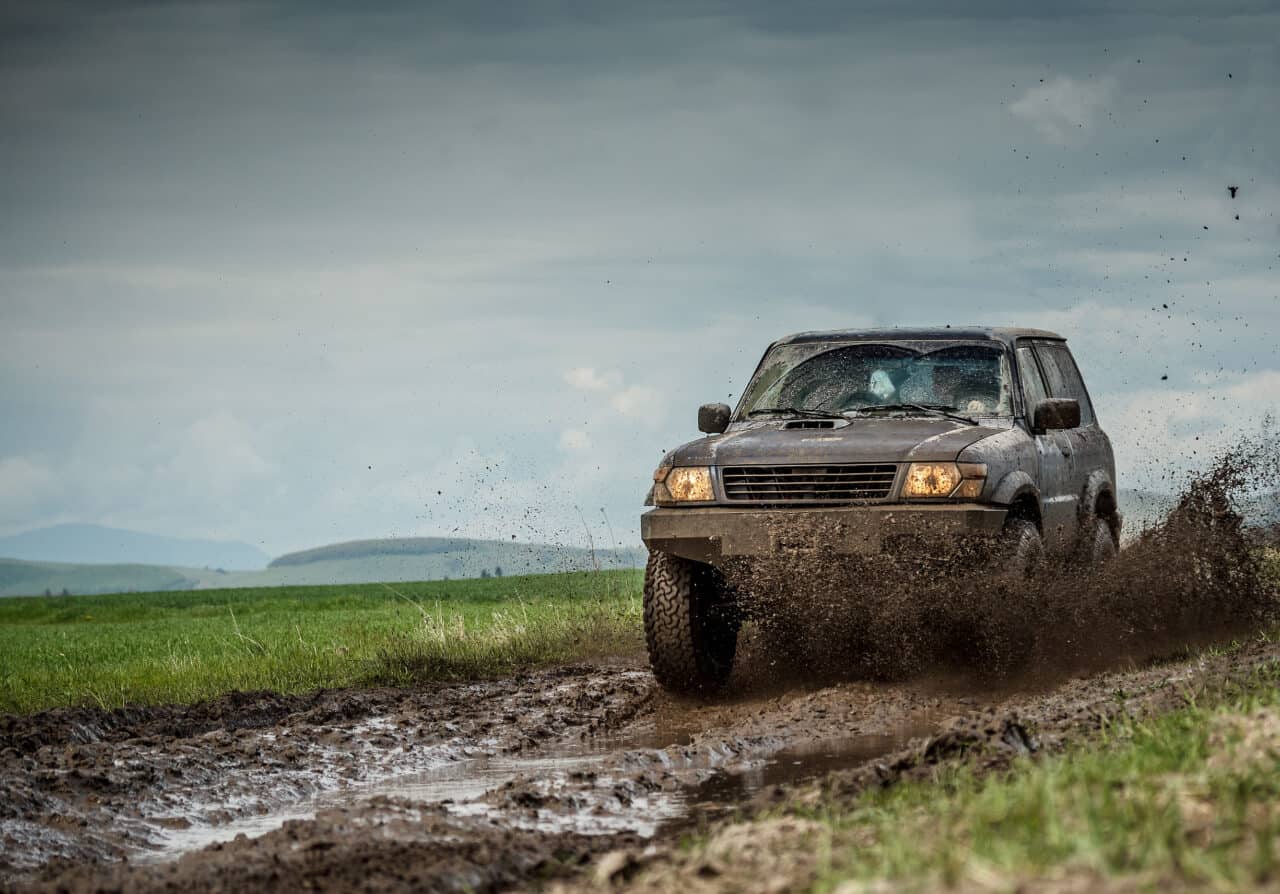How Do I Know if My 4-wheel drive is Working?
Many different types of cars have 4-wheel drive as an option. But how do you tell if it is working?
If the 4-wheel drive is engaged, the driver will feel the left and right wheels bind up while driving. The bucking or lurching motion of the car is normal and indicates the front end is under power. The vehicle will become a little bit stiffer when turning. If there are serious concerns, take the vehicle to a mechanic.
Driving a 4X4 car can make you feel safer, especially in bad weather or off-road conditions. However, if you don’t know if it’s working, all the security goes out the window. So, here’s how to tell.

4-Wheel Drive and How to Know if it’s Working
4-wheel drive ensures that all wheels of the vehicle rotate at the same speed and receive the same amount of torque.
It is mainly used when the wheels of a vehicle do not have a lot of traction and need an extra boost to get the car moving, such as in snowy areas or in really sandy areas.
Many people also use 4-wheel drive when they go off-roading, and many people purchase vehicles such as trucks and SUVs because they have 4-wheel drive.
How to Test:

If you want to test your 4-wheel drive, put your car into 4-wheel drive and then turn the front wheels left and right while driving in a tight circle at a very low speed. You should feel them bind up if 4wd is working.
Finding a steep gravel road or driveway is one of the easiest ways to see if it is working.
Then, drive up it in 2-wheel drive, and then stop. Try to go. You’ll probably find that you are stuck.
So, switch it into 4wd. You should pull out without spinning if it engages.
The bucking or lurching motion of the vehicle is normal and indicates that the front-end wheels of the car are under power, so be prepared and do not panic if this happens.
You can drive in tight circles if you are still struggling to know if your 4WD is engaging or you can’t find a gravel incline near you. This is the simplest method.
This should tell you if 4wd is engaged, however, there could still be problems with it working perfectly.
What you do is: drive in tight circles in an open space in 2WD. Then do the same thing in 4WD. If you have your four-wheel drive engaged, you will feel a difference.
It will feel harder to turn and almost like your tires are sticking to the ground (as long as the road conditions are dry.)
For a more specific look, you can put your truck on lifts or jacks and see if the front tires spin when you turn the wheel by hand. 4WD is not working if the tire spins and the front axle does not.
Obviously, this method is more intensive and time-consuming with the others.
If you have plans to go off-roading or are going to be driving through harsh conditions and you are unsure if your 4WD is working, take your car into a mechanic to be extra cautious. You don’t want to get stranded because your truck or SUV isn’t working as it should be.
One thing about the 4-wheel drive that is very important to know is that you should never use it while driving on perfectly dry roads.
A four-wheel drive aims to get a good grip on gravel, sand, snow, or water. It’s made to function in these conditions, needing some slippage to work, and driving on dry pavement will cause damage to the drivetrain.
The 4-wheel drive also uses more gas or fuel than the 2-wheel drive, so make sure that you turn it off when you do not need to use it.
4WD is a type of drivetrain system that transfers the engine’s power to all four wheels, rather than just two. You see 4WD primarily on trucks and SUVs. Smaller cars typically have all-wheel drive rather than 4-wheel drive, although the two systems are very similar.
For more information on 4-wheel drive and how it works, watch this video:
Faulty 4-Wheel Drive
If you are worried that your 4-wheel drive is not working or is not working as well as it has in the past, take it to an experienced mechanic that you trust and have them take a look at it.
The issue could be due to anything from a faulty shift mechanism on the front axle to an electrical fault in the control system. However, the problem could also be caused by a damaged transfer case.
The transfer case is one of the most important components that distinguish all-wheel drive (AWD) and four-wheel drive (4WD) vehicles.
Driving all four wheels provides superior traction, resulting in improved performance in challenging terrain.
This is made possible by the transfer case, which allows power to be transferred to both the front and rear wheels.” source
When you have a faulty transfer case, you will find that you are having difficulties, or are unable to, switching your car from 2-wheel drive to 4-wheel drive.
Problems with 4WD do happen and it can sometimes get stuck in four wheel drive, so get it checked out by a professional to prevent more serious issues from happening as a result.
4WD Warning Light Illuminates
Many vehicles with the ability to use 4-wheel drive have a “service four-wheel drive” message that lights up on the dashboard or something that is very similar that pops up on the dash when there is a problem with the system.
Other vehicles will keep the 4WD light illuminated continuously to indicate a problem, even when you are sure you have turned off the 4-wheel drive.
If you notice that this is happening, take your car to a mechanic you trust and have them check and ensure everything is working correctly.
When to Use 4-Wheel Drive
With most vehicles and in most driving conditions that you drive in regularly, having just two wheels to move your car is all you need.
Dry, paved roads do not need you to use a 4-wheel drive or all-wheel drive because your tires can easily get the traction needed to move and stop your vehicle safely.
But when your driving surface is covered in snow or consists of loose sand or gravel, it helps to have all of the wheels working together to give your car some extra traction and move it over the terrain safely.
So, if you are getting into places that are harder to move safely or are driving through the wet or loose ground, it’s a good idea to switch into 4 wheel drive. You will get more control.
Share Your Insights With US
Did we forget something, get something right (or wrong)? We’d love to hear your insights! Share your automotive experiences based on our article in the comments below. Your input enriches our community’s knowledge. Thanks in advance for sharing!
4-Wheel Drive vs All-Wheel Drive
4-wheel drive and All-wheel drive are very different, although they work similarly.
Unlike two-wheel-drive vehicles driven from the front or rear wheels, in an all or four-wheel-drive vehicle, power is directed to all four wheels.
Many people choose cars with all-wheel-drive traction for safety reasons, while adventure seekers tend to opt for 4-wheel-drive vehicles so they can head off-road.
Although vehicles with 4-wheel drive capabilities are more commonly found, even in cars not meant to be used while off-roading, all-wheel drive is better if you plan on living in an area with icy roads conditions.

All-wheel drive is better than 4-wheel drive if you are planning on driving on snowy and icy roads. With all-wheel drive, the driver does not have to use guesswork.
The car automatically knows where to send the power, and you do not have to think about exactly where you are going.
The 4-wheel drive requires a bit more thought and foresight because of the Hi and Lo settings that work better in different situations listed above.
However, all-wheel-drive systems do wear out tires faster than many other vehicle types, especially if the all-wheel drive is used in areas where it is not needed.
Although vehicles with 4-wheel drive or all-wheel drive capabilities are very useful, you do not need to purchase one if you do not think that you need to.
However, if you want a vehicle with these capabilities, it is up to you to purchase a vehicle with 4-wheel drive or all-wheel drive, but it is important to consider the areas you plan on driving in when purchasing a car.
If you regularly drive in icy conditions, but do not plan on taking your car to go off-roading, I recommend that you purchase a car with all-wheel drive.
If you plan on towing large items and plan on going off-roading frequently, or if you plan on driving in areas with deep snow on the roads, then I recommend you purchase a vehicle with 4-wheel drive.
Recommended Reading
- Driving In 4 Wheel Drive [15 Must-Knows Tips]
- Do I Use 4H or 4L to Drive in Snow? (ANSWERED!)
- How Do I Know if My 4 Wheel Drive is Working?
- Answers To Common 4 Wheel Drive Questions (FAQ)
- Can You Switch To 4WD While Driving?
- Is Full-Time 4WD the Same as AWD?
- Can I Turn Off 4×4 While Driving?
- Should You Use Four-Wheel Drive When Towing?
- Should I Drive In 4WD On Ice?
- What Are 2H, 4H, And 4L on 4×4?
- Should I drive in 4WD AUTO or 2WD?
- How Fast Can You Drive In 4×4 High?
